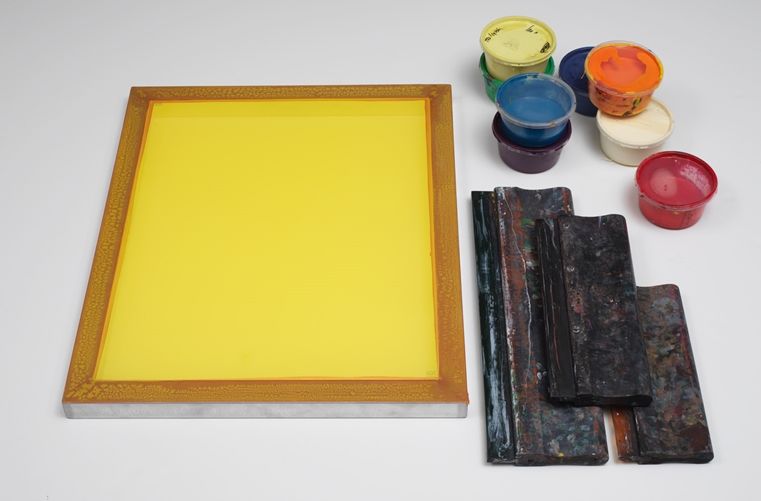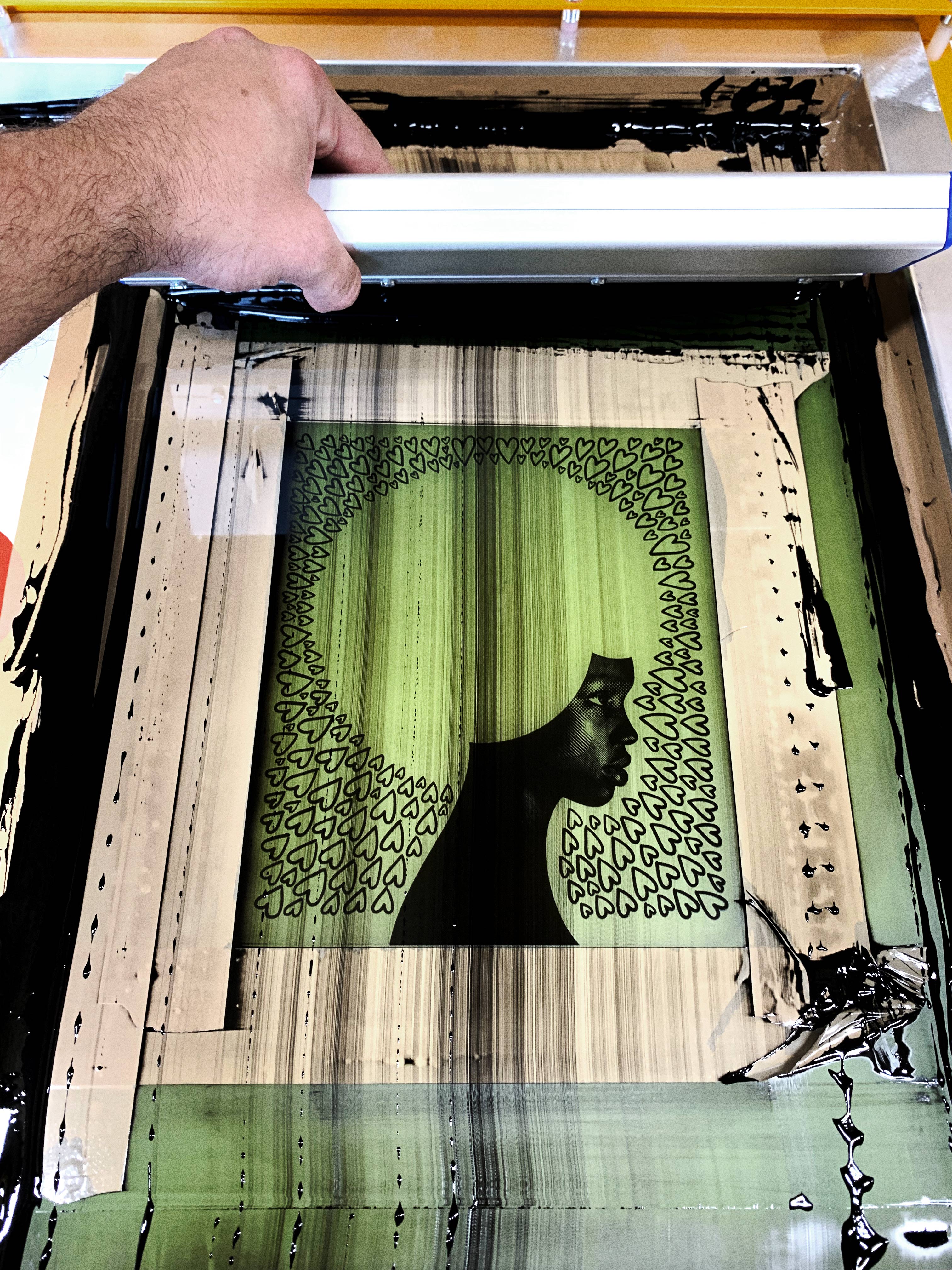The Important Overview to Understanding Screen Printing and Its Versatile Utilizes
Screen printing has a rich background that goes back to ancient times, evolving into an innovative strategy used across various industries today. This overview discovers the ins and outs of the screen printing procedure, detailing its applications in style, home, and advertising decoration - 10:9 Design Embroidery. Understanding these principles can open innovative possibility for both creative and business projects. The adhering to sections will certainly expose important ideas and techniques to enhance one's screen printing endeavors
The History of Screen Printing
Although screen printing has origins that map back centuries, its development mirrors the imaginative and technological advancements of numerous societies. Coming from ancient China, the method was at first utilized for decorating fabrics and later spread to Japan, where it became essential to Ukiyo-e woodblock printing. The method changed to Europe in the 18th century, where it acquired appeal among artisans and industrial printers. The invention of photo emulsion in the 20th century revolutionized screen printing, enabling even more detailed designs and greater performance. Artists like Andy Warhol better propelled its popularity, making use of the tool to develop famous jobs that blended commercialism and art. By the late 20th century, screen printing had developed itself as a flexible technique, utilized in vogue, marketing, and art. Today, it proceeds to advance, incorporating digital innovation and broadening its applications throughout different sectors.
The Screen Printing Refine Explained
Screen printing transforms imaginative visions into substantial layouts with a series of specific actions. At first, a picture is created and after that transferred onto a screen, commonly made from great mesh material extended over a structure. A light-sensitive solution is applied to the screen, which is subjected to light, solidifying in areas not covered by the picture. After rinsing the unhardened solution, a pattern is formed.
Next, the screen is put over the substratum, whether it be fabric, paper, or an additional material. Ink is then pressed through the open locations of the stencil utilizing a squeegee, transferring the design onto the substratum below. This procedure can be duplicated for several shades, calling for different screens for every tone. The printed product is cured making use of heat to guarantee the ink sticks appropriately, resulting in a long lasting, vibrant layout ready for usage.
Kinds Of Screen Printing Techniques

Additionally, specialty strategies, such as discharge screen printing, get rid of color from the material to create softer prints, while aluminum foil screen printing applies metallic foil to accomplish a shiny surface (10:9 Design near me). Each strategy supplies unique features, satisfying various creative requirements and production scales, ultimately increasing the possibilities within the screen printing domain
Applications of Screen Printing in Various Industries

In addition, the signs and marketing markets make use of screen printing for producing distinctive displays and banners. This technique enables vibrant colors and detailed styles that capture interest. In electronic devices, screen printing is utilized for applying conductive inks to motherboard, necessary for component links. The home design market embraces screen printing to generate distinct designs on textiles and wall surface art. Generally, screen printing works as a critical tool throughout diverse areas, improving products with customized and aesthetically attractive graphics.
Tips for Successful Screen Printing Projects
While embarking on a screen printing job, cautious interest to detail can significantly enhance the last outcome. Initially, picking top notch products is crucial; this consists of the screen, inks, and substrates. Making use of ideal mesh matters can affect ink deposition and detail resolution. Prep work is similarly vital; extensive cleaning of screens and correct exposure times ensure crisp prints.
Next off, accurate registration is essential for multi-color prints. Using positioning tools can aid attain precise layering. In addition, testing prints on scrap products before manufacturing helps recognize prospective issues without wasting sources.

Often Asked Concerns
What Materials Are Best for Screen Printing on Textile?
Cotton and polyester blends are perfect for screen printing on fabric because of their resilience and ink absorption. In addition, specialized fabrics like silk or canvas can generate distinct textures and coatings, improving the general style high quality.
Just how Do I Clean and Maintain Screen Printing Equipment?
To cleanse and preserve screen printing equipment, one need to on a regular basis wash screens with ideal solvents, inspect squeegees for wear, lube relocating components, and shop all products in a completely dry, dust-free environment to extend their life expectancy.
What Are the Ecological Influences of Screen Printing?
Screen printing can have substantial environmental impacts, including chemical waste from solvents and inks, water usage during cleaning processes, and power consumption. Lasting techniques and green materials are vital for minimizing these adverse effects.
Can Screen Printing Be Done in the house Properly?
Screen printing can be properly done at home with check here the right products and strategies. Enthusiasts can create quality prints, though success depends on their skill level, equipment, and understanding of the procedure entailed.
What Are the Costs Associated With Beginning a Display Printing Business?

Beginning a screen printing service entails expenses for tools, products, and work area. First expenses commonly range from a couple of hundred to several thousand dollars, relying on the scale, high quality of machinery, and wanted manufacturing capacity.
Screen printing has a rich history that dates back to ancient times, progressing into an advanced technique made use of across numerous markets today. One more method, rotating screen printing, utilizes cylindrical screens, assisting in continual printing on material rolls, thereby boosting effectiveness for large-scale productions. Additionally, specialized techniques, such as discharge screen printing, get rid of dye from the fabric to produce softer prints, while foil screen printing applies metal foil to attain a shiny finish. In the fashion field, screen printing is extensively made use of to produce vibrant styles on clothing, allowing brands to showcase their unique designs. Cotton and polyester blends are excellent for screen printing on textile due to their sturdiness and ink absorption.